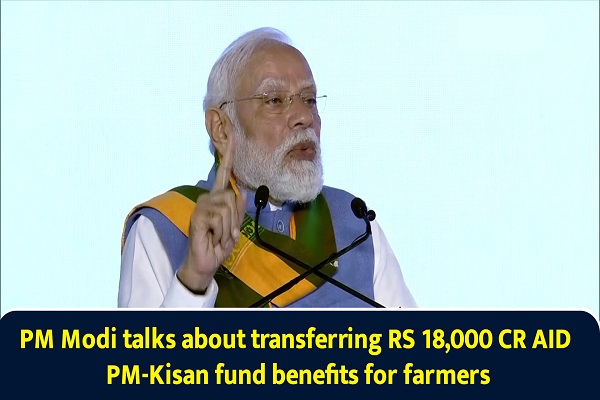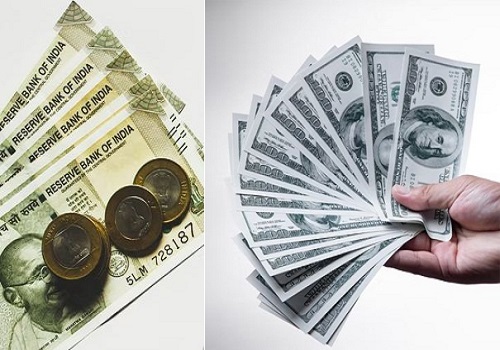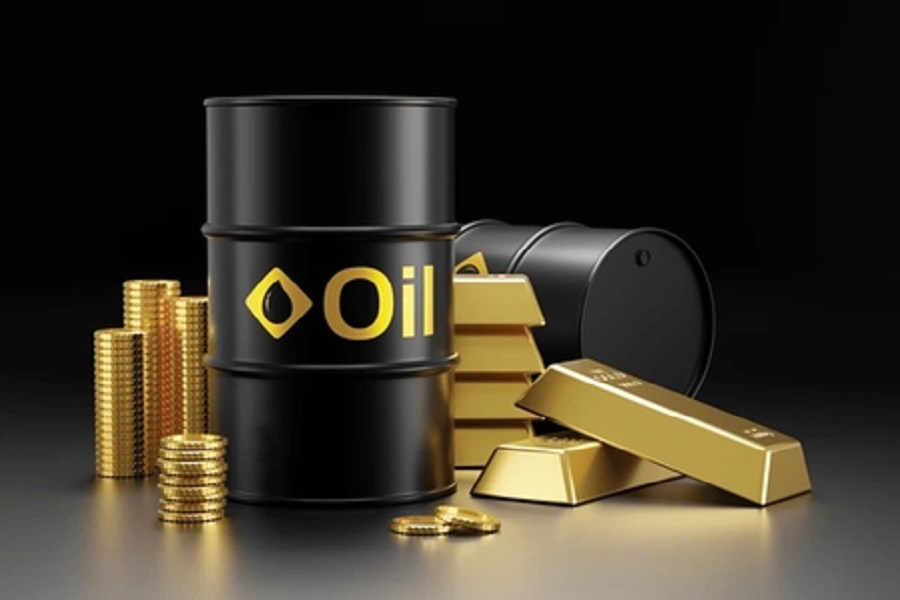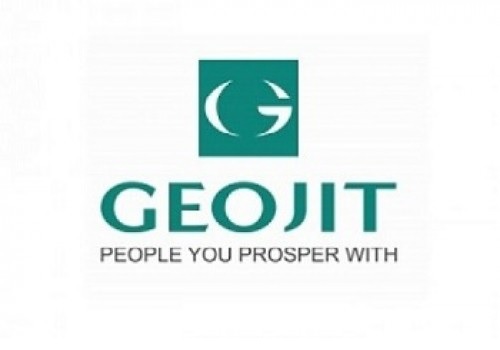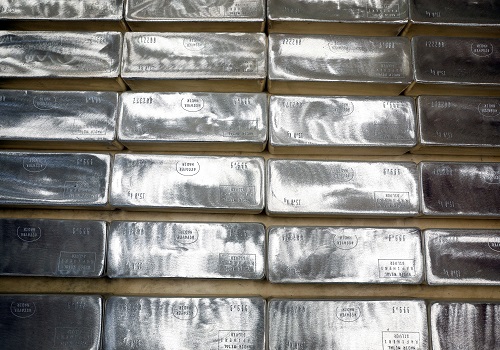Cottoncandy trading range for the day is 54610-54990 - Kedia Advisory

Gold
Gold prices surged by 0.83% to settle at ?87,648, driven by renewed haven demand amid escalating global trade tensions. The precious metal found strong buying interest after U.S. President Donald Trump threatened an additional 50% tariff on China unless it rolled back its 34% retaliatory duties. The European Union’s proposal of 25% counter-tariffs on U.S. goods further fueled fears of a broader trade war, prompting investors to seek the safety of gold. Federal Reserve Chair Jerome Powell acknowledged the potential for higher inflation and slower growth as a result of these tariffs, signaling a challenging path for U.S. monetary policy ahead. China's central bank continued its gold accumulation spree for the fifth consecutive month, increasing reserves to 73.7 million fine troy ounces by March-end, reaffirming global central banks’ preference for gold amid geopolitical and economic uncertainty. Physical demand trends showed divergence, with Chinese buyers increasing purchases due to trade jitters, while Indian buyers stayed on the sidelines, awaiting price corrections. Domestically, gold consumption is expected to moderate from last year’s nine-year high of 802.8 metric tons, as record-high prices deter jewellery purchases but fuel investment demand. Interest in gold ETFs, digital gold, and bullion remains strong among Indian retail investors. Technically, the market is witnessing fresh buying, with open interest rising by 1.78% to 15,073 lots. Support is pegged at ?87,185, with a break below exposing ?86,725. On the upside, resistance lies at ?88,275, and a breakout above could test ?88,905.
Trading Ideas:
* Gold trading range for the day is 86725-88905.
* Gold rose as concerns that an escalating trade war could trigger a global recession drove haven demand.
* President Trump threatened to impose an additional 50% duty on China starting Wednesday.
* China's gold reserves stood at 73.7 million fine troy ounces at the end of March, up from 73.61 million ounces of February.
Silver
Silver prices edged higher by 0.56% to settle at ?88,744, buoyed by escalating global trade tensions and a weaker U.S. dollar. The ongoing standoff between the U.S. and China, with Beijing resisting what it labeled as “blackmail” from President Trump’s administration, contributed to safe-haven buying in precious metals. The European Commission’s retaliatory tariffs and proposal for a “zero-for-zero” tariff pact further fueled investor caution, lending additional support to silver. Expectations of a U.S. interest rate cut, possibly beginning as early as May, also boosted the metal's appeal, with markets pricing in nearly 97 basis points of cuts by year-end. Fundamentally, the silver market continues to face a significant structural deficit for the fifth consecutive year. In 2025, global demand is expected to remain stable at 1.20 billion ounces, as record-high industrial demand offsets weaker jewelry and silverware consumption. Industrial fabrication, particularly in green economy sectors, is forecast to climb 3% to over 700 Moz, marking a new milestone. Physical investment demand is also seen rising by 3%, especially in Europe and North America, while Indian jewelry demand is projected to fall due to high domestic prices. Technically, silver is witnessing fresh buying with a 0.84% increase in open interest to 22,840. Support is seen at ?87,915, with further downside potential to ?87,090, while resistance is at ?90,020, and a breakout could test ?91,300.
Trading Ideas:
* Silver trading range for the day is 87090-91300.
* Silver gains aided by global trade tensions and a softer dollar.
* China refused to bow to what it called "blackmail" from the U.S. as a global trade war ignited by President Trump's sweeping tariffs
* The European Commission said it had offered a "zero-for-zero" tariff deal, while striking back with 25% tariffs on some U.S. imports.
Crude oil
Crude oil prices declined by 1.81% to settle at ?5,197, pressured by escalating global trade tensions and growing fears of a slowdown in economic growth that could dent energy demand. China's retaliation to U.S. tariffs and President Trump's aggressive trade policies have intensified concerns of a global trade war, prompting investors to reduce exposure to risk assets, including crude. In the first quarter of 2025, Asia's crude imports fell to 26.44 million barrels per day, down by 640,000 bpd from the same period last year, contradicting earlier expectations by OPEC and the IEA that Asia would drive global oil demand this year. Adding to the pressure, Saudi Arabia slashed crude prices for Asian buyers to a four-month low, signaling softening demand. Meanwhile, OPEC+ has advanced its output increase plans, deciding to add 411,000 bpd in May, significantly higher than the previously intended 135,000 bpd, which further fueled supply surplus concerns. U.S. crude inventories rose by 6.165 million barrels, significantly above expectations of a 2 million barrel draw, while stocks at Cushing surged by 2.373 million barrels. The IEA now expects a supply surplus of around 600,000 bpd in 2025, possibly expanding to 1 million bpd if OPEC+ continues unwinding cuts. Technically, crude is under fresh selling pressure with a 0.72% rise in open interest to 17,741. Support lies at ?5,116 and a break below may test ?5,036, while resistance is pegged at ?5,304, with potential to test ?5,412 if momentum reverses.
Trading Ideas:
* Crudeoil trading range for the day is 5036-5412.
* Crude oil dropped on fears global trade war could slow economy
* Fed rate cut hopes support crude amid global growth fears.
* OPEC+ to boost output by 411,000 bpd in May, urges compliance.
Natural gas
Natural gas prices fell sharply by 5.86% to settle at ?303.7, pressured by a dip in LNG exports and updated forecasts pointing to milder weather and reduced demand over the next two weeks. Despite the price drop, there has been a slight decline in production, with average output in the Lower 48 U.S. states slipping to 105.7 bcfd in April, down from a record 106.2 bcfd in March. Even with this decline, storage builds have exceeded expectations, with U.S. utilities adding 29 billion cubic feet of gas to storage in the week ending March 28, surpassing the anticipated 27 bcf build. This marked the third consecutive weekly increase, a rare occurrence for March, signaling demand weakness. Stockpiles remain 4.3% below the five-year average and 21.7% lower than last year, despite mild conditions allowing an early start to injection season. The largest additions were recorded in the South Central region, highlighting regional surpluses. Meanwhile, the EIA’s outlook remains bullish on longer-term fundamentals, projecting U.S. dry gas production to rise to 104.6 bcfd in 2025 and 107.3 bcfd in 2026. LNG exports are also forecasted to grow significantly, reaching 14.0 bcfd in 2025 and 16.2 bcfd in 2026, up from a record 12.0 bcfd in 2024. Technically, natural gas is under fresh selling pressure, with open interest rising sharply by 31.51% to 14,421 as traders added short positions. Immediate support is seen at ?294.6, with a break potentially dragging prices to ?285.4. Resistance stands at ?319.8, and a move above this could open the door to ?335.8.
Trading Ideas:
* Naturalgas trading range for the day is 285.4-335.8.
* Natural gas dropped on a decline in daily LNG exports and forecasts for mild weather
* US gas output on track to drop from record high in March
* US gas inventories on track for rare build in March
Copper
Copper prices slipped by 0.96% to settle at ?797.85, as escalating global trade tensions sparked economic uncertainty, prompting investors to adopt a cautious stance. The trade standoff between the U.S. and China intensified after President Trump threatened an additional 50% tariff on Chinese goods, while Beijing firmly rejected what it termed as U.S. blackmail. This geopolitical tension weighed on sentiment across industrial metals, including copper. The Comex futures premium over the LME benchmark has dropped sharply by 52% since early April, influenced by strong inventory inflows, pushing Comex stocks to a six-year high. Simultaneously, LME inventories rose by 3,225 tons, or 1.53%, to 213,450 tons, with Rotterdam warehouses accounting for most of the increase. On the production side, Chile exported $4.45 billion worth of copper in March, a 3.2% rise year-on-year, even as the country considers slashing its 2025 price estimate from $4.25 to as low as $3.90 per pound due to market uncertainty. Additionally, Glencore declared force majeure on Chilean copper shipments, further tightening global supply. Demand-side figures paint a mixed picture. China's refined copper output grew 3.7% year-on-year in Jan-Feb, reaching 2.3 million metric tons, while unwrought copper imports fell 7.2% as domestic smelting capacity expanded. Technically, the market remains under selling pressure, with open interest increasing by 2.9% to 6,571. Immediate support lies at ?789.6, with further downside potential to ?781.3. Resistance is seen at ?811.8, with a breakout possibly extending gains to ?825.7.
Trading Ideas:
* Copper trading range for the day is 781.3-825.7.
* Copper dropped as global trade tensions escalated, intensifying concerns about an economic downturn.
* LME copper stocks increased by 3,225 tons and Rotterdam stocks increased by 2,725 tons
* Comex futures premium over the LME benchmark has dropped by 52% since the start of April
Zinc
Zinc prices declined by 2.74% to settle at ?246.25, pressured by fears of weakening demand amid rising global recession risks triggered by escalating trade tensions. Market sentiment was further rattled as former U.S. President Trump warned of additional tariffs on countries failing to reach trade deals, prompting China to condemn the measures as “economic bullying.” On the supply side, data from the London Metal Exchange (LME) showed zinc stocks fell by 2,500 tons to 125,825 tons, with significant outflows from Singapore warehouses. Meanwhile, LME on-warrant stocks declined sharply to 94,700 tons, their lowest level since November 2023, following 42,575 tons of cancellations, suggesting tight near-term availability. China’s zinc production rose 1.8% YoY in Jan-Feb to 1.13 million metric tons, but output dipped in February due to shorter workdays, holidays, and maintenance shutdowns. However, production is expected to rebound in March, rising over 13% MoM, supported by post-holiday recovery, increased working days, and smelter capacity expansions. Globally, the zinc market recorded a deficit of 10,000 metric tons in January, down from 41,100 tons in December, reflecting tighter fundamentals. On the corporate front, Nyrstar’s 25% production cut at its Hobart smelter in Australia due to financial challenges has introduced additional supply-side pressure. Technically, zinc remains under fresh selling pressure with a 2.01% rise in open interest to 3,301. Immediate support is at ?243.6, with further downside potential to ?240.9, while resistance is pegged at ?250.9 and ?255.5 on a breakout.
Trading Ideas:
* Zinc trading range for the day is 240.9-255.5.
* Zinc dropped on fears about reduced demand and higher chances of recession following trade tensions.
* Inventory data released by LME showed that zinc stocks fell by 2,500 tons, or 1.95%, to 125,825 tons.
* Global zinc market deficit fell to 10,000 metric tons in January from 41,100 tons in December
Aluminium
Aluminium prices declined by 1.22% to settle at ?231.3 as escalating trade tensions between the U.S. and China weighed on market sentiment. The drop came after U.S. President Trump threatened to impose an additional 50% tariff on Chinese goods if Beijing does not reverse its retaliatory tariffs. China's commerce ministry responded firmly, rejecting what it described as "blackmail" by the U.S., signaling further strain between the world’s two largest economies. On the supply side, London Metal Exchange (LME) aluminium inventories fell by 2,175 tons to 452,525 tons, with Port Klang recording the largest warehouse outflow. Despite this drawdown, rising production in key alumina-producing regions such as Guinea, Australia, and China suggests an ongoing recovery in supply. China alone produced a record 44 million tons of aluminium in 2024, nearing the government-imposed cap of 45 million tons aimed at curbing oversupply and emissions. In January and February 2025, China's aluminium production increased 2.6% YoY to 7.32 million metric tons, driven by improved smelter margins due to easing alumina supply issues and falling input costs. Global primary aluminium output fell 0.9% YoY in February to 5.645 million tons, and JP Morgan has projected a tightening market with a potential 600,000-tonne deficit by 2025, primarily due to constrained supply growth. Technically, aluminium is under fresh selling pressure with a 1.19% rise in open interest to 3,838. Immediate support lies at ?229.6, with further downside to ?227.9, while resistance is seen at ?234.4, and a break above could lead to testing ?237.5.
Trading Ideas:
* Aluminium trading range for the day is 227.9-237.5.
* Aluminium dropped as US President threatened to impose an additional 50% tariff on Chinese exports to the US.
* LME data showed that aluminium stocks fell by 0.48%, to 452,525 tons.
* Citi cuts China GDP growth forecast to 4.2% from 4.7% for 2025
Cottoncandy
Cottoncandy prices eased slightly by 0.29% to settle at ?54,800 amid profit booking after recent gains driven by lower-than-expected U.S. planting estimates. The USDA's latest planting intentions report revealed U.S. all-cotton intended planting at 9.8 million acres for 2025, marking a notable 12% decline from the previous year. Domestically, the Cotton Association of India (CAI) revised its 2024-25 crop estimate down to 295.30 lakh bales from 301.75 lakh bales, citing reduced yields in central India. The government's second advance estimates also aligned with this trend, lowering the crop projection to 294.25 lakh bales. This year’s pressing is projected to decline nearly 10% from 327.45 lakh bales last season, with notable reductions in Gujarat and Maharashtra. Meanwhile, cotton imports are set to double to 32 lakh bales, with 22 lakh already imported by February, indicating increased reliance on overseas supply. Exports are anticipated to fall 40% year-on-year to 17 lakh bales due to tepid global demand, while closing stocks are forecast to drop to 23.49 lakh bales from 30.19 lakh bales last year. Global developments present a mixed outlook. Brazil’s production is set to rise by 1.6% with an expanded planting area, but the USDA’s minimal changes to the U.S. balance sheet and lowered farm price projection to 63.5 cents/lb suggest softer prices. Technically, the market is in long liquidation, with open interest unchanged at 248 and prices down ?160. Immediate support lies at ?54,700, with further downside risk to ?54,610, while resistance is pegged at ?54,890, above which ?54,990 may be tested.
Trading Ideas:
* Cottoncandy trading range for the day is 54610-54990.
* Cotton dropped on profit booking after prices gained as USDA report showed lower-than-expected U.S. planting estimates.
* USDA's planting intentions report showed U.S. all-cotton intended planting of 9.8 million acres for 2025, a 12% reduction from 2024.
* CAI has further reduced its 2024-25 crop estimate by 2 per cent to 295.30 lakh bales.
* In Rajkot, a major spot market, the price ended at 25632.6 Rupees dropped by -0.03 percent.
Turmeric
Turmeric prices edged higher by 0.61% to settle at ?14,254, driven by strong buying interest amid lower-than-expected arrivals in major mandis. Supply constraints, coupled with robust export demand, have provided significant support to prices. Export momentum remained strong in the second half of 2024, with shipments hitting a four-year high and surpassing 1.75 lakh tonnes recorded in 2020. During April–December 2024, turmeric exports rose by 13% to 136,921 tonnes compared to the same period in 2023. December 2024 alone saw a sharp 46.94% year-on-year jump in exports, underscoring strong international demand. Despite an increase in the area under turmeric cultivation this season—up 10% to 3.30 lakh hectares—untimely rains have raised concerns about yield. The Nanded region, a key growing area, is reportedly seeing issues like small rhizomes and crop rot, likely leading to a 10–15% decline in productivity. As a result, production may remain at par with last year’s 10.75 lakh tonnes or fluctuate slightly. However, the arrival of the new crop is gradually increasing, which may keep a lid on excessive price gains in the near term. From a technical perspective, turmeric futures are under fresh buying, with a 1.17% increase in open interest to 10,780 contracts and a price gain of ?86. Immediate support is seen at ?13,744, and a break below could lead to testing ?13,232. On the upside, resistance is expected at ?14,734, and a move beyond that could see prices test ?15,212.
Trading Ideas:
* Turmeric trading range for the day is 13232-15212.
* Turmeric prices gained as lower-than-expected arrivals restricted supplies.
* Exports continued to pick up in the second half of 2024, with shipments reaching a four-year high.
* New crop yields are expected to be 10-15% lower this year, with the Nanded region particularly affected.
* In Nizamabad, a major spot market, the price ended at 14324.05 Rupees dropped by -0.26 percent.
Jeera
Jeera futures declined by 0.36% to settle at ?24,700 amid profit booking after recent gains, which were driven by steady domestic demand and a surge in export activity, particularly from Gulf countries. The market continues to closely monitor supply trends, as near-term arrivals remain limited due to a delay in the new crop from Gujarat and Rajasthan—caused by unfavorable weather that pushed sowing back by about a month. Despite the current tightness in supply, the upside remains capped due to subdued overall demand and sufficient availability from previous stockpiles. Farmers are reportedly holding around 20 lakh bags of jeera, of which only 3–4 lakh bags are expected to be traded by the end of the season. Production for the 2023–24 season is estimated to be strong at 8.6 lakh tonnes from over 11.87 lakh hectares, up significantly from 5.77 lakh tonnes the previous year, driven by better sowing and improved crop conditions. Nevertheless, India continues to have a competitive edge in global markets, offering the cheapest cumin at around $3,050 per tonne, while Chinese cumin is priced $200–250 higher. This has spurred strong export demand, with shipments during April–December 2024 rising 70.72% year-on-year to 165,084 tonnes. December alone saw a 47.77% rise over the same month in 2023. Technically, Jeera is under fresh selling, with open interest increasing by 7.64% to 5,286 as prices dropped ?90. Support is now seen at ?24,240, with a break below targeting ?23,780. Resistance is pegged at ?25,180, and a move above could lead to testing ?25,660.
Trading Ideas:
* Jeera trading range for the day is 23780-25660.
* Jeera dropped on profit booking after prices gained amid price support from domestic demand, as well as export activity.
* The current season is expected to have similar production levels as last year due to better crop conditions and good sowing.
* Jeera exports during Apr - Dec 2024, rose by 70.72 percent at 165,084.40 tonnes as compared to 96,701.43 tonnes exported during Apr- Dec 2023.
* In Unjha, a major spot market, the price ended at 24591.55 Rupees dropped by -0.09 percent.
Views express by all participants are for information & academic purpose only. Kindly read disclaimer before referring below views





